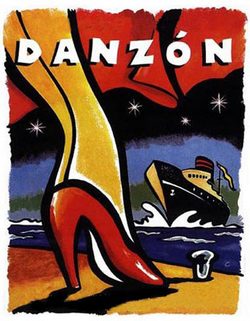The Recovery of Danzón in Cuba
- Submitted by: admin
- Editorial Articles
- Arts and Culture
- culture an traditions
- Culture and Traditions
- Dance
- Music
- Society
- 04 / 12 / 2009

Created from foreign musical roots, the danzón hasn’t only been danced in Cuba.
It was difficult to envision that the Cuban national dance would evolve from the legacy left by contredanse. From Spain, with its musical legacy, passing through England during the occupation of Havana in 1762, and even the French fleeing the Haitian Revolution and settling in the Island’s eastern region, all contributed to form one of the identifying symbols of the Cuban nation.
Although other more recent musical sounds like the cha-cha-cha, rumba and salsa have gained in popularity, the danzón, with its cadence and rhythm, bears the stamp of Cuban tradition. Despite its widespread diffusion, the Caribbean island’s national dance yielded in the face of more dynamic musical genres and at present is usually associated with elders.
However, the irony is that it was preferably danced during winter, because, according to the dancers, it led to extreme overheating. In winter, danzón, in summer, waltzing.
If its name in Spanish implies a long dance, its origin had specific causes. In the mid 19th century, dancers delighted in a dance of figures accompanied by their own voices, which they called by that name. Nonetheless, the appropriate music, which later became the dance’s complement on these occasions, was missing. Miguel Faílde was its successful creator.
Interpreted in an unprecedented manner by a typical wind orchestra, at the Matanzas Lyceum, January 1st, 1879, the name of the first danzón known was Las alturas de Simpsom. The name of the piece was a marked homage to the site in the city where popular celebrations were held.
Years later, musicians like Raimundo Valenzuela, Enrique Guerrero and Félix Cruz, enriched the genre considerably, modifying its interpretative aspects.
At the beginnings of the 20th century, José Urfé revolutionized the music completely by introducing, in his composition, a mountain son in the style of the tres (three string guitar) musicians in the eastern provinces. As musicologist Helio Orovio said: “El Bombín de Barreto (a song by Urfé) defined for the rest of the century, the singular style that would distinguish the danzón forever.”
The danzón found its acme in the mid 19th century, when the press articles chronicled the least details concerning popular dance activities. Years after its creation and influenced by African rhythms, the danzón gained in interpretative liberty when the dancing couple held each other in a more sensual manner.
Created from foreign musical roots, the danzón hasn’t only been danced in Cuba. Other Latin American nations, like Mexico, still enjoy it. From it, other rhythms like the danzonete and the cha-cha-cha emerged, and through it emblematic figures of the Cuban musical universe earned great prestige. Barbarito Diez became the King of the genre’s songs. The danzón owes its ample diffusion and clearest interpretation to Diez.
It was difficult to envision that the Cuban national dance would evolve from the legacy left by contredanse. From Spain, with its musical legacy, passing through England during the occupation of Havana in 1762, and even the French fleeing the Haitian Revolution and settling in the Island’s eastern region, all contributed to form one of the identifying symbols of the Cuban nation.
The swing of Cuban son seasoned this legacy. It developed into a purely indigenous composition, the one that’s now being recovered thanks to the Havana Danzón Festival, where varying categories allow the participation of the whole population of whatever nationality. During its celebration, conferences and meetings that clarify the influence of the danzón on later sound creations like salsa, and other related topics, take place.
(Cubanow.net)
Comments